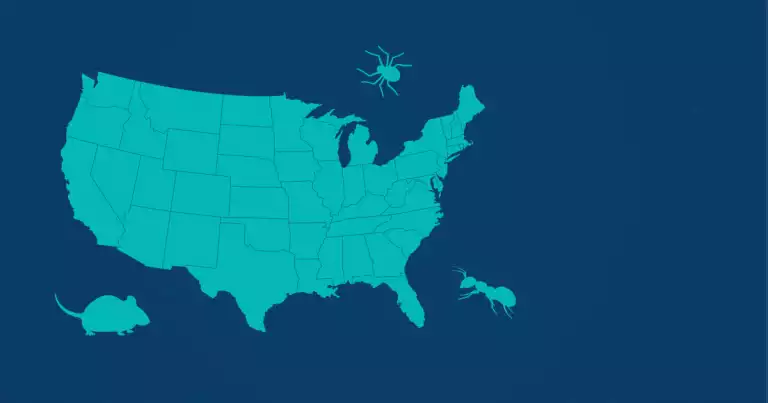Homeowners, What Pests Are in Your Region?
3 minute read
Click play to listen to the Homeowners, What Pests Are in Your Region article.
You do your best to make your home a comfortable, inviting place that friends and family love to be in. But there are certainly some guests you don’t want to welcome into your home environment.
Pests like termites, insects, and other creepy crawlers will make themselves at home in warm, damp areas. These unwelcome guests find their way into basements, attics, crawl spaces, and garages, and can do real damage to the structural integrity and safety of your home.
What pests should you look out for? That can depend on what region of the country you live in and the type of home you have.
Let’s take a look at the most common house pests by region:
Continental United States – Ants
The U.S. is home to nearly 1,000 species of ants, ranging in size, color, and tendencies. Most ants stay outdoors all year long, but a few varieties find their way indoors all over the country in the warmer months.
Ants seek out water and food, which is why you’ll typically see them in your bathroom, kitchen, or basement. They often find water that comes from leaky pipes, backed-up drains, and areas of intense humidity.
To prevent ant infestations, you should close up any gaps in siding and windows, fix leaking pipes and sitting water, and clean up food in the kitchen. They’ll go after pet food as well, so try to avoid leaving out cat or dog food when possible.
Northwest – Spiders
While ants are common in houses during the summertime, it’s the colder weather that brings spiders indoors in the Northwest U.S.
Nearly all species of spider are harmless to humans. They can even be beneficial in your home, preying on other pests like flies, cockroaches, mosquitoes, and moths.
Even knowing the potential benefits, it’s understandable if you’d prefer to not have spiders roaming the walls of your home. To remove them, try to capture them in a jar or other container and release them outdoors where they can continue their pest control on the exterior of your home.
There are several strategies you can try to keep spiders out, especially in high-traffic areas like your bedroom or living room. Again, closing up obvious gaps in your home’s siding and windows, and removing any standing water will be helpful.
Midwest and South – Mosquitoes
The heat and humidity of summer are perfect for mosquitoes. And unlike other pests on this list, mosquitoes can be harmful to humans when they’re carrying illnesses like the Zika virus and malaria.
Mosquitoes are hard to avoid when you’re outdoors in humid areas, but keeping them out of the house can be accomplished with a few simple changes.
If you have any open windows for ventilation or for air conditioner units, repair or replace broken window screens and make sure there’s a tight seal.
Mosquitoes love dark, damp places, so check for leaky pipes under sinks and in your basement and laundry room. Big picture, make sure to prioritize humidity control throughout your home to avoid mosquito infestations.
AprilAire whole-home dehumidifiers offer a comprehensive way to manage humidity all year long.
Northeast – Rodents
Northeastern states can experience extreme winter weather, forcing people to hunker down in the warmth and security of their homes.
Pests like mice and rats will also seek out warmer areas in the winter months, and they’ll often find them in basements and garages. It’s not uncommon to find nests filled with food that the rodents have stored up to last through the winter.
Like prevention strategies for other pests, you’ll want to seal up any gaps in your siding, insulation, and foundation. Additionally, check for any water leaks and make sure your garbage and food scraps are always securely stored.
Hawaii – Cockroaches
The year-round warm weather of Hawaii makes it a dreamy vacation spot. But that tropical climate is also perfect for cockroaches.
There are four species of cockroach that infiltrate homes in Hawaii, often in search of food and water.
Since most homes in tropical areas aren’t built to be air-tight, it can be difficult to seal up all entry points. The main tactic you can use is to remove food and water sources, and consider extermination if the problem becomes persistent and overwhelming.
